This page is to demonstrate actual blood stains that an
analyst would be expected to work with.
THESE ARE ACTUAL SCENES WITH REAL BLOOD. I suggest going
to the previous
page if you are not comfortable with this. The images
may depict real victims of battery and
even murder. Their identities will be not be disclosed.
Different Patterns:
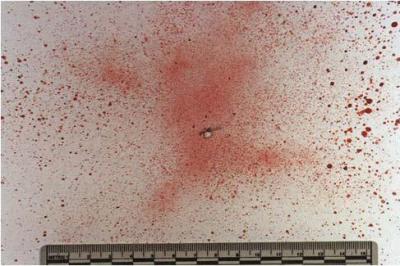 |
High Velocity Mist: Most often seen accompanied with gunshot victims, this type of pattern is made of primarily super fine mist. As you can see, much of the stain can be seen congregating around a central point. |
 |
Medium Velocity Impact: This type of pattern is usually seen with blunt force trauma, knife wounds, and other such injuries. These are characterized by the tails that show directionality that we spoke about earlier. |
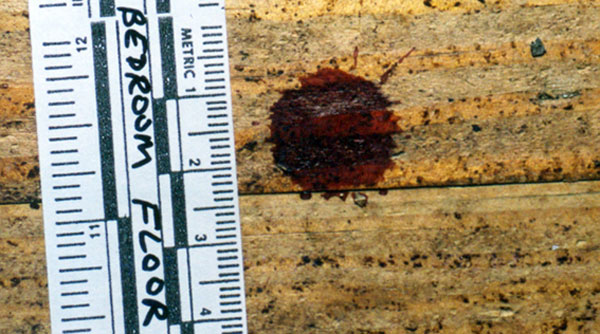 |
Low Velocity Impact: Usually a stain that fell and struck a surface at a 90 degree angle. This is normally perfectly circular unless it lands on a surface that is not smooth, such as the wood floor in the picture. In this instance satellite patterns and spine patterns connected to the central stain. |
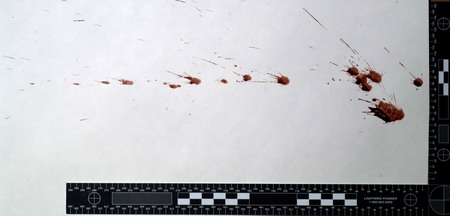 |
Cast Off Pattern: Cast off patterns are often linear patterns caused by the motion of an object. There is another type of these patterns; Cessation Cast-Off. In Cessation Cast-Off, the blood stain forms from rapid negative acceleration. |
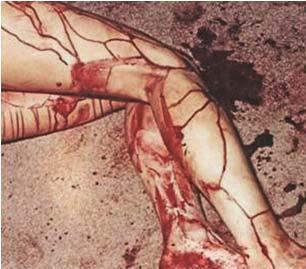 |
Flow Pattern: Caused by a volume of blood moving due to gravity or from the motion of the surface that the blood is on. |
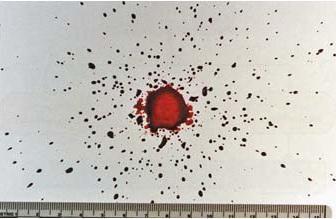 |
Satellite Drop Pattern: A blood stain that originates from another larger blood stain, called the parent. Is caused by blood impacting a surface. |
 |
Void Pattern: A pattern identified by the lack of blood. Particularly useful when determining the location of an object or person at the time of the surrounding stains. |
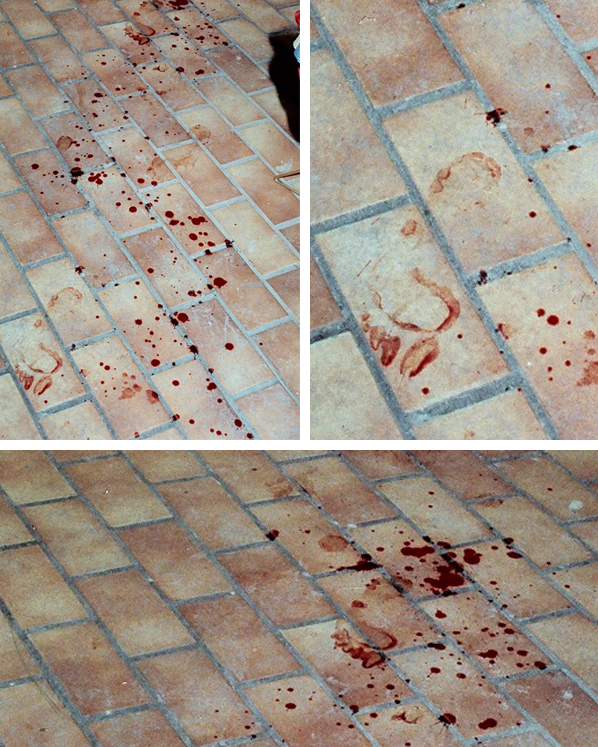 |
Transfer Stains: Stains that occur when there is contact between a surface with blood on it and a surface without. In the photo, we can see that this transfer stain was caused by somebody's bare foot on a brick floor. |
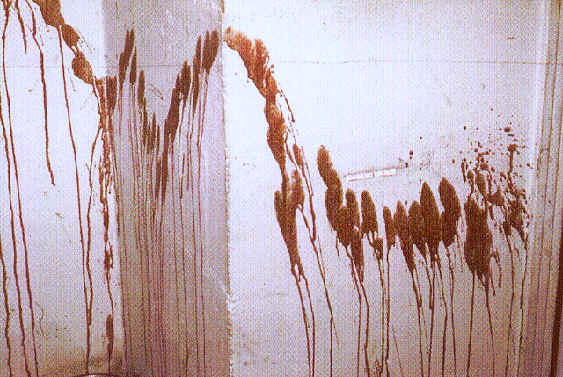 |
Arterial Spray: Quite self-explaining, this is a stain that is caused by being under arterial pressure. In stains like these you can see the changes of high pressure and low pressure. |